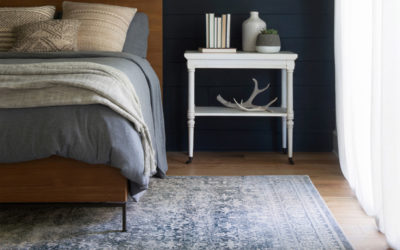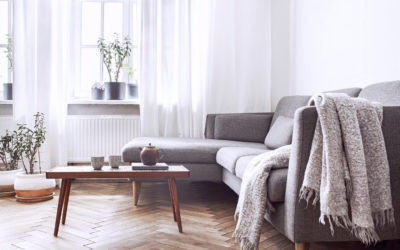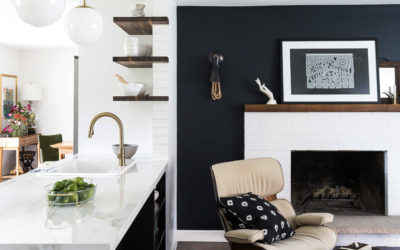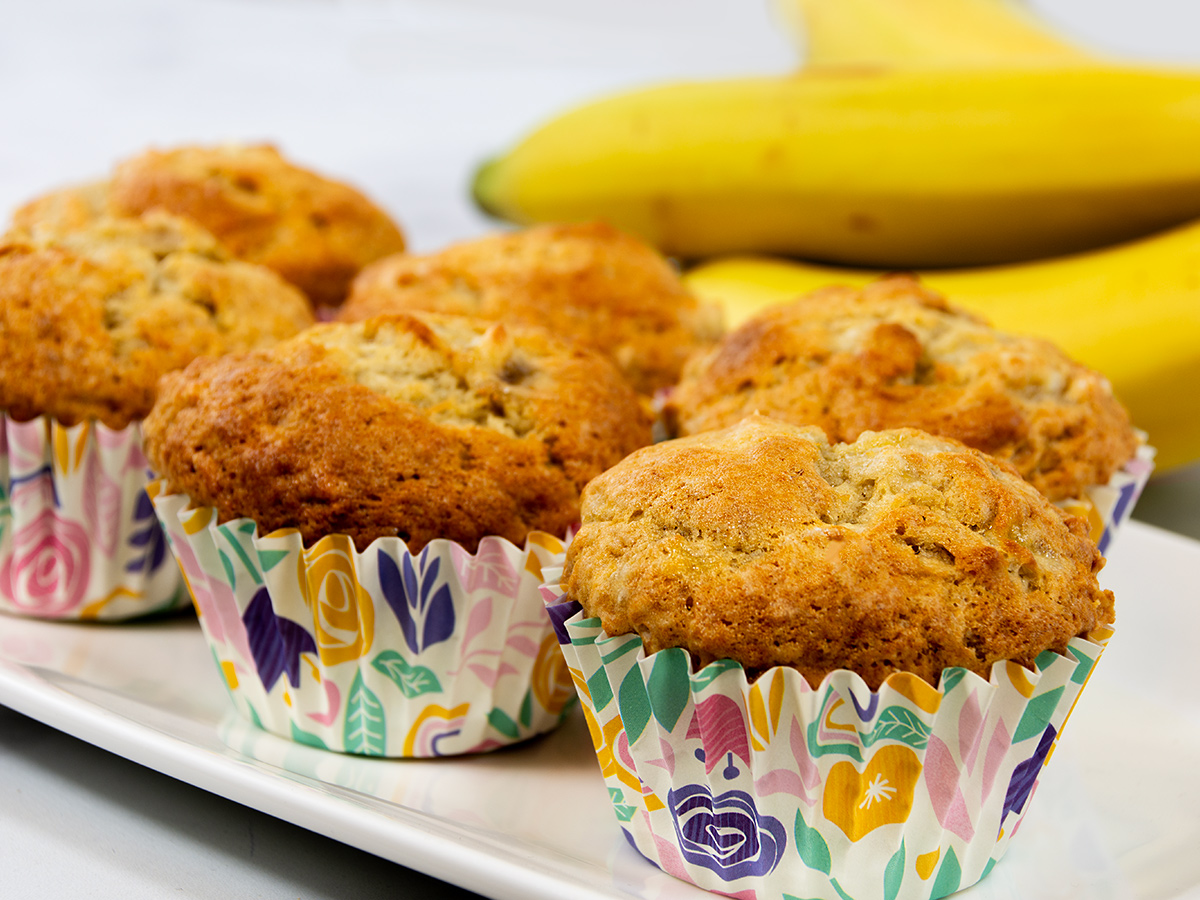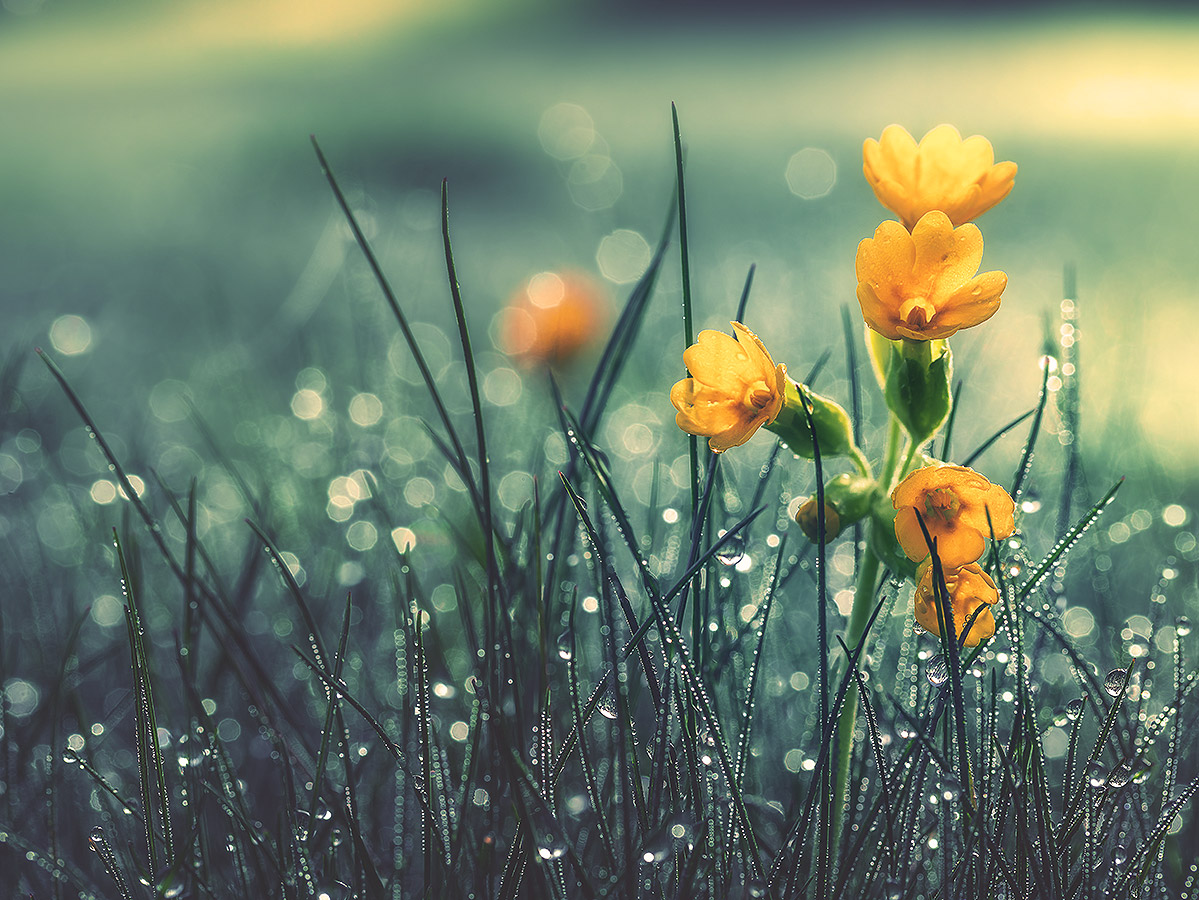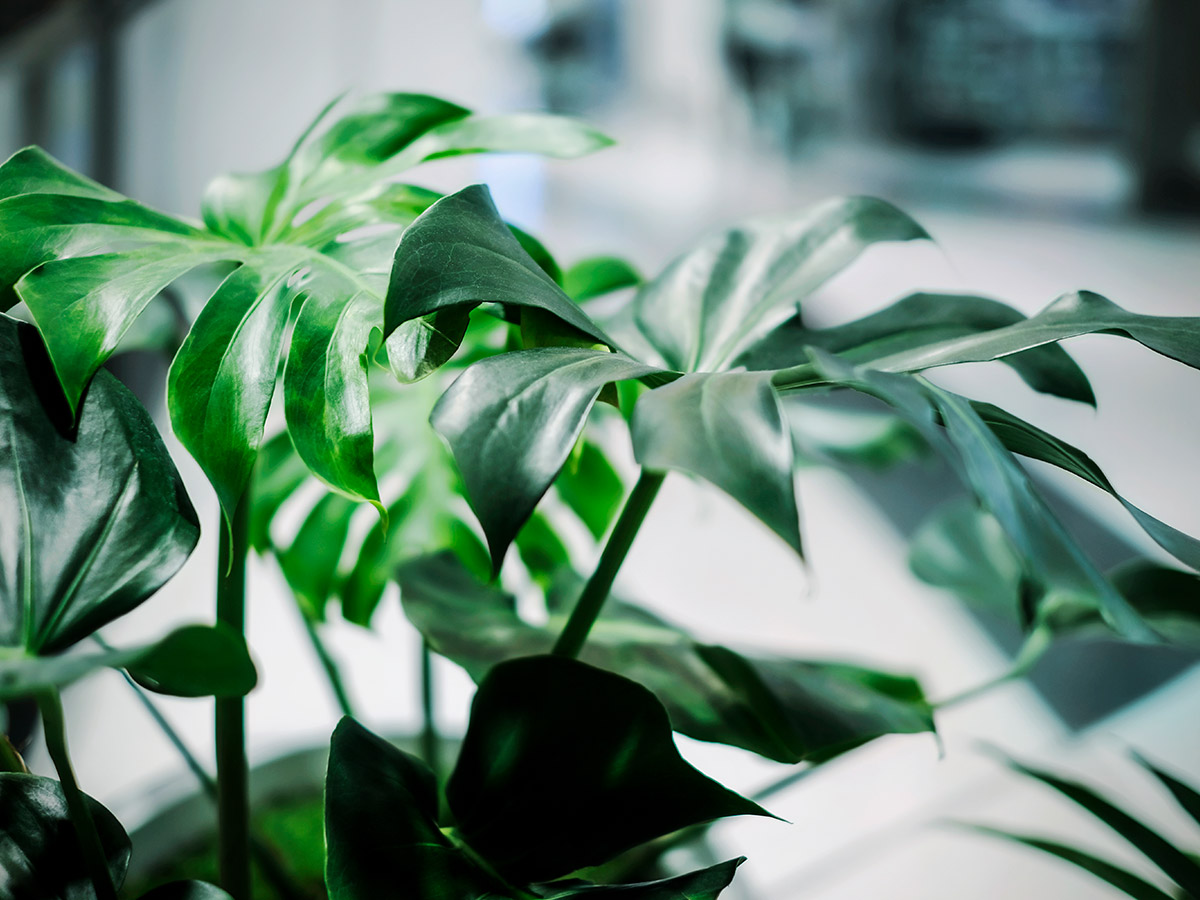
Monstera aka “Swiss Cheese Plant” © FeelPic
Designing with Indoor Plants
At one point in my life, I had over 30 indoor plants. But then my husband and I started havings kids, and I gave some away. Then we moved across the country, and I had to part with many, taking only about five with me. That was 12 years ago, and here I am, back up to 25 indoor plants. Some of them I stick outside in summer, but most of them are full-time indoor residents. What can I say, I’m a plant lady (checkout my t-shirt)!
Indoor plants have many health benefits, with the biggest being mental stress release. It’s no secret that the greenery of nature soothes our mind and body, helping us to relax and unwind. Remember the green room on Grey’s Anatomy? Studies have shown that being in the presence of plants lowers blood pressure, heart rate, and the stress hormone cortisol. Indoor plants also purify and add moisture to the air.
So now that we’ve established that we all should have plants in our home, let’s talk about how to incorporate them into your home decor. Below are three things to consider when buying and placing indoor plants in your home.
A quick note: You plants won’t survive if they’re in the wrong light. Before buying any plants, examine the room’s lighting—is it low light (indirect) or bright light (direct)? Only buy plants that will thrive in the room’s lighting conditions.
Plant Size and Placement
As with all furnishings in a well-thought-out space, indoor plants abide by the same rules of size. Large plants won’t work in a small room just as small plants won’t work in a large room. Their size needs to feel naturally integrated into the space. If a plant is too large in a small space, it will distract your eye from other elements in the room and outweigh the design. If you have a larger space and/or very high ceilings, go big and tall. Smaller plants may get lost and be barely noticeable. So do consider your room size when shopping for indoor plants, and pay attention to growth height on the labels. For tabletop plants, keep the max height to 2.5 ft, and for floor plants, that depends on your ceiling height. It’s best to keep a 3 ft clearance to allow for airflow, plus, you don’t want your plant growing into the ceiling.
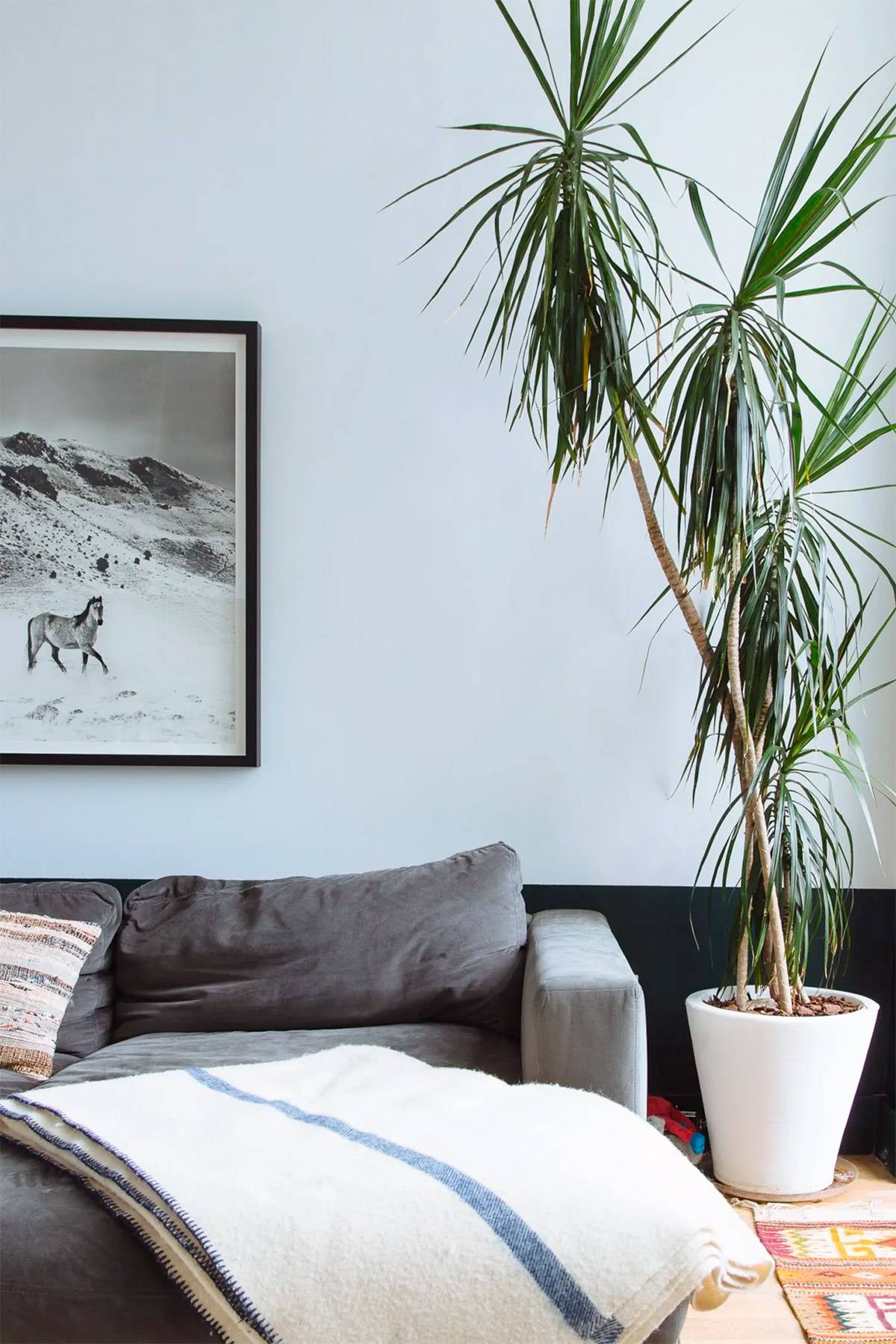
This beautiful dracaena stands tall in the corner of this living space, with plenty of space around it to shine. © Pablo Enriquez
Another thing to consider when choosing plant size is placement. Plants need at least 6-8″ clearance from other objects to allow for good airflow, plus aesthetically will look better when less cramped. Tall floor plants work well in open corners or on the sides of large furniture as anchors. If you have large windows or a sliding glass door, placing plants on sills or on the floor near them helps connect with the outdoor nature, which gives the feeling of bringing nature in. If you’re placing several plants in a room, go with odd numbers and place them around the space, versus all in one spot, to help balance the room.
Leaf Type
Any indoor plant will work, but certain ones can help reinforce your decor style. If your decor is modern, spiky succulents, cacti, and snake plants have minimal silhouettes to echo sleek modern furniture lines. If your decor is tropical, ferns and palms will help add a rainforest vibe. However, you can do the opposite and create contrast. For example, you can soften modern edges with a curvy or lacey leaf shape, like a fiddle leaf fig. Ultimately though, you should choose plants that speak to you.
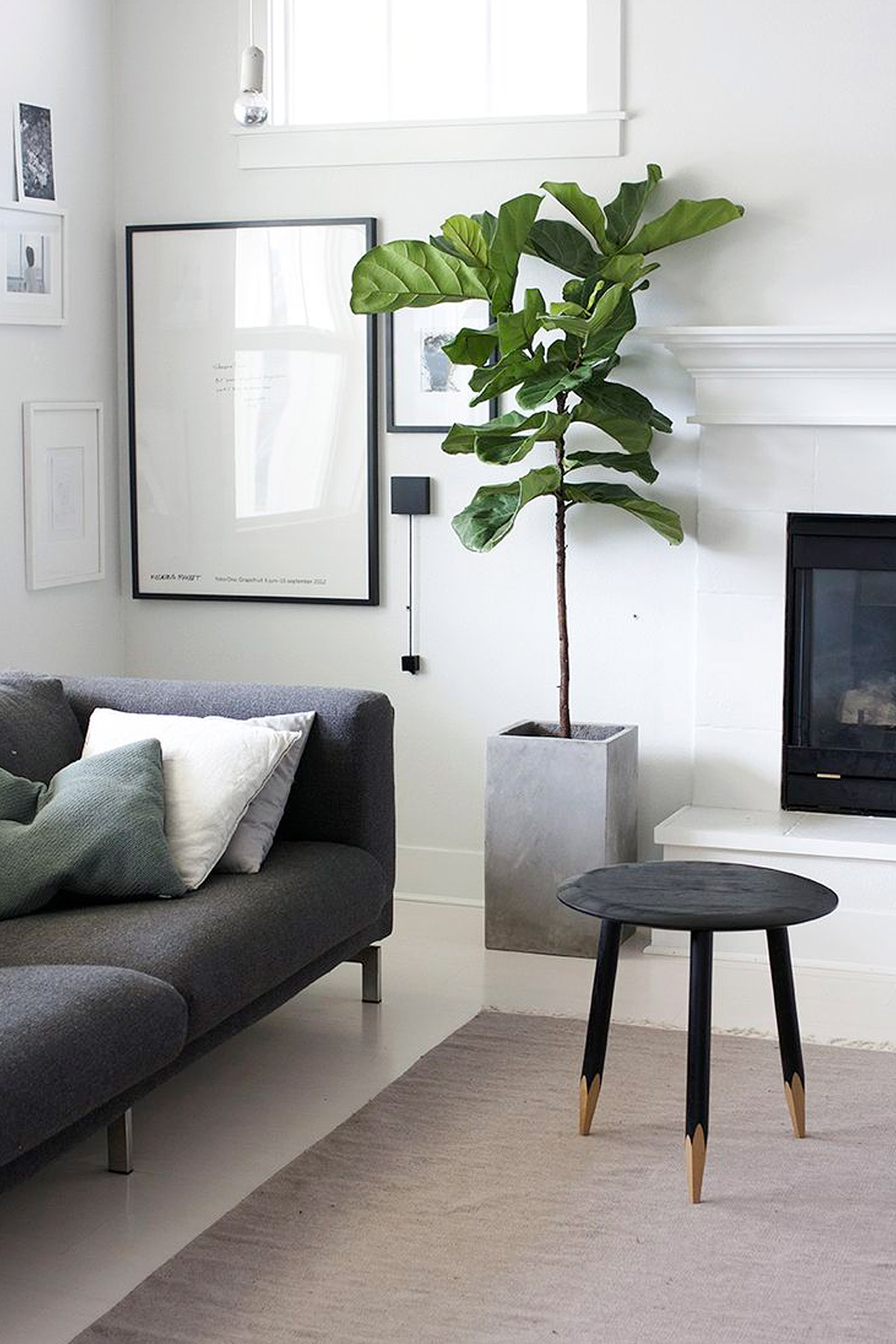
Pot Style
Just as leaf type can reinforce your decor style, so do the pots you choose. Again, match your pot shape and color to your room’s decor, so it accents it properly. It’s amazing what the right pot can do for a plant. A square white pot helps make any plant fit right into modern decor. A terra-cotta pot adds earthiness and warmth. If you love a particular plant but its size is too small for a larger space, put it in a raised planter or use a plant stand for added height. When doing indoor plant clusters, choose pots that have the same style but with slight design variations. Be creative and have fun with plant pots and stands to make the most of its design aesthetic.
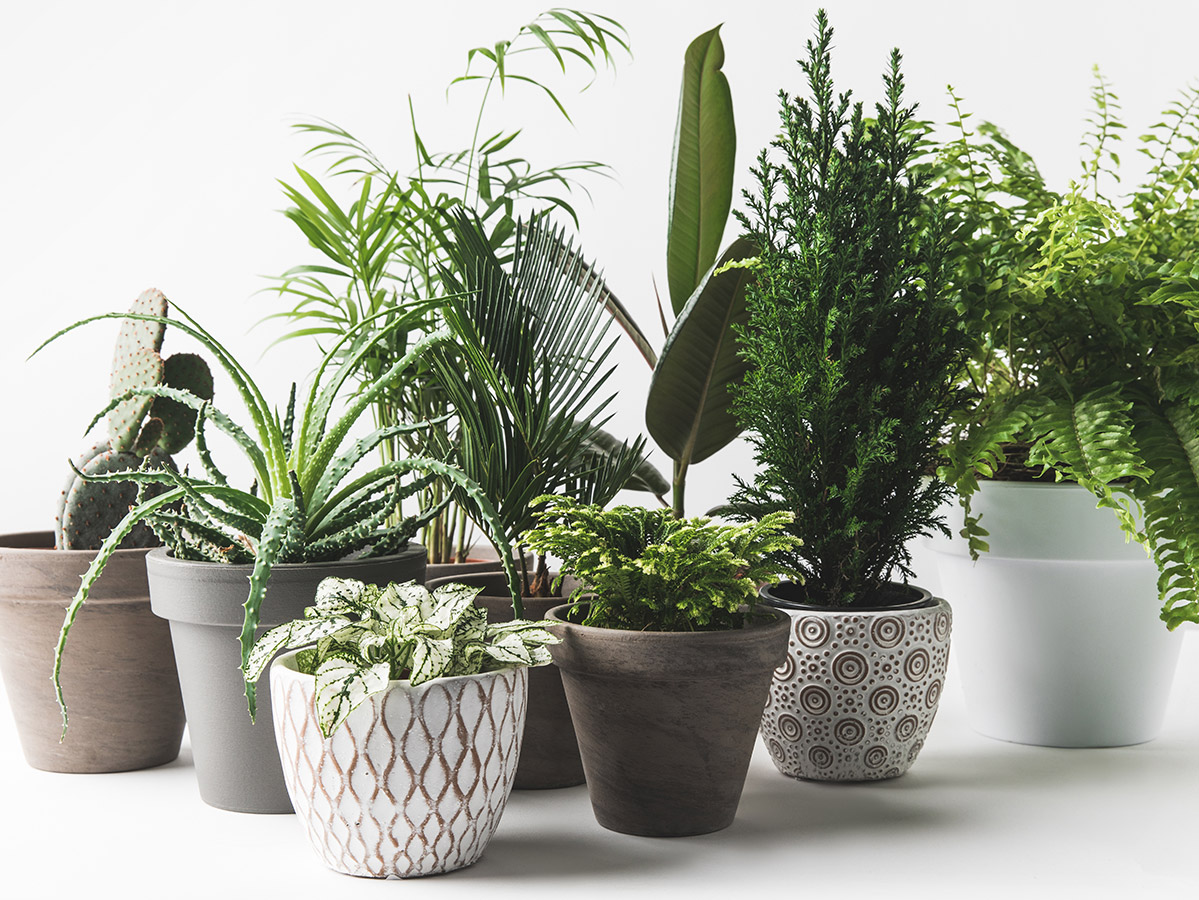
Adding indoor plants to your home decor can be a fun way to accent your style and also gain some health benefits. Bringing nature in will help you feel calmer and more peaceful while indoors, but why not do it in style! I hope these tips help you find the perfect plants for your home.
RELATED READS
Area Rug Tips in Home Design
© MagnoliaWhen designing a space, area rugs are an essential element to consider. Interior designers most often start their plan by choosing a rug first and building the room around it because rugs are the anchor of a room. They ground the space as well as the...
Five Tips for Designing Small Spaces
Don’t let IKEA have all the fun—you too can design a small space spectacularly! If you asked 10 interior designers how to design for small spaces you’d probably get a lot of different ideas because each space has its own story to tell. What works in one room may not...
Clever Accent Walls
© BRIO Interior DesignThe idea of an accent wall may sound like an exciting way to add pop to a room, and it’s certainly easier than painting all of the walls but don’t break open that can of paint just yet. Your room needs to meet certain criteria in order to...
